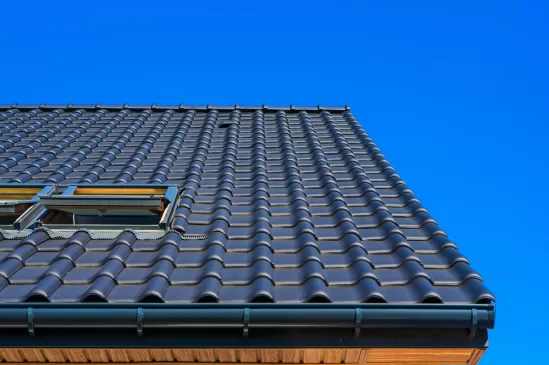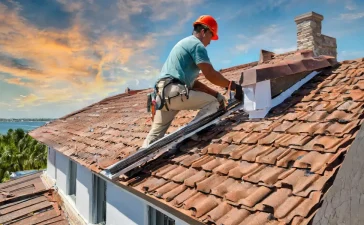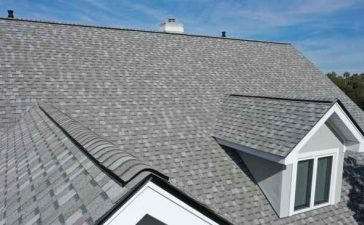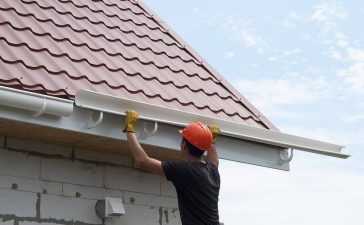Roofing is often regarded as one of the most vital components of any home. It not only enhances the aesthetic appeal of your property but also serves as the first line of defense against the elements. When it comes to protecting your home, two important terms frequently arise: leak-proof and weatherproof. But what exactly do these terms mean, and how do they relate to your roofing decisions? And more importantly, which one is best for your specific needs? This article will delve into the nuances of leak-proof versus weatherproof roofing, exploring their definitions, differences, and the factors you should consider when deciding what works best for your home.
Understanding the Basics: Leak-Proof vs. Weatherproof
Before we explore their distinctions, it’s essential to understand the basic meanings of the terms leak-proof and weatherproof in the context of roofing.
-
Leak-Proof Roofing refers to a roofing system that is specifically designed to prevent water from infiltrating the home. This involves using materials, designs, and installation methods that seal off any potential gaps or openings where water could enter. Leak-proof roofing typically focuses on water resistance and drainage, ensuring that water does not penetrate the roof or the underlying structure.
-
Weatherproof Roofing, on the other hand, is a broader concept that refers to a roofing system designed to withstand a wide range of environmental conditions, not just water. This includes protection from rain, snow, ice, high winds, extreme heat, and UV radiation. Weatherproof roofs are built to endure and protect the home against the harsh effects of weather, providing comprehensive protection over time.
Leak-Proof Roofing: The Key to Preventing Water Damage
Water infiltration is one of the most common and costly roofing issues that homeowners face. A leak can lead to extensive damage to both the roof itself and the interior of the home, including mold growth, wood rot, electrical damage, and even structural issues. This is why leak-proof roofing systems are so crucial for certain regions, particularly those that experience heavy rainfall or snow.
Benefits of Leak-Proof Roofing
-
Protection Against Water Damage: The most obvious benefit of a leak-proof roof is its ability to prevent water from entering your home. Proper installation and quality materials ensure that water runs off the roof and away from the foundation, preventing leaks that could lead to costly repairs.
-
Durability: Leak-proof systems typically use high-quality, waterproof materials like synthetic underlayment, rubber membranes, and advanced sealants to form a watertight barrier. These materials increase the roof’s lifespan and make it more resistant to wear and tear from environmental factors such as rain and snow.
-
Improved Indoor Air Quality: One of the often-overlooked consequences of water infiltration is the potential for mold and mildew growth. By preventing leaks, leak-proof roofs help maintain a dry, healthy indoor environment and reduce the risk of respiratory issues caused by mold spores.
-
Lower Maintenance Costs: A leak-free roof generally requires less frequent maintenance because the materials used are more resistant to water damage. This means fewer repairs and a more cost-effective roofing solution in the long term.
Drawbacks of Leak-Proof Roofing
While leak-proof roofing is essential for preventing water damage, it is important to note that it does not necessarily offer complete protection against other environmental elements. For example, a roof that is leak-proof may still suffer damage from high winds, ice, or extreme temperatures. It’s also possible that a roof may be impervious to water but lacks the strength to withstand heavy snow load or the sun’s UV rays.
Weatherproof Roofing: The All-Inclusive Solution
While leak-proof roofing focuses specifically on water prevention, weatherproof roofing is designed to protect against a broader range of environmental hazards. It is a comprehensive solution that shields your home from the damaging effects of not just rain, but also wind, snow, hail, sun, and more.
Benefits of Weatherproof Roofing
-
Protection Against the Elements: A weatherproof roof offers all-around protection from a variety of environmental challenges. It can handle rain, snow, hail, and even high winds without compromising the integrity of your home’s structure. In areas with extreme weather conditions, such as coastal or mountainous regions, weatherproof roofing is a must.
-
Energy Efficiency: Some weatherproof roofing materials, such as reflective coatings, can help reduce heat absorption during the summer months, keeping your home cooler and reducing the need for air conditioning. Conversely, weatherproof roofs may provide better insulation in winter, helping to retain warmth and reduce heating costs.
-
UV Protection: Many weatherproof roofing materials are specifically designed to protect against the damaging effects of ultraviolet (UV) radiation. Prolonged exposure to the sun can degrade roofing materials over time, leading to cracking, fading, and premature wear. Weatherproof roofing helps to minimize these effects, prolonging the life of the roof.
-
Extended Lifespan: Because weatherproof roofs are built to endure various harsh conditions, they typically last longer than standard roofing systems. Materials like metal, slate, and synthetic shingles are specifically engineered to withstand extreme temperatures, hail, and high winds, providing long-term protection for your home.
-
Increased Home Value: A weatherproof roof not only enhances the aesthetic appeal of your home but also boosts its resale value. Homebuyers are more likely to appreciate a roof that offers comprehensive protection, reducing their worry about future repairs or maintenance.
Drawbacks of Weatherproof Roofing
The main downside of weatherproof roofing is that it may require more upfront investment than leak-proof options, particularly when using high-end materials like metal or slate. While these roofs are built to last, the initial cost can be higher. Additionally, while weatherproof roofs offer broader protection, they still need to be installed correctly to perform at their best.
Which Option is Best for Your Home?
The decision between leak-proof and weatherproof roofing largely depends on your geographic location, budget, and the specific needs of your home. Both roofing solutions offer unique benefits, but understanding the nuances between them can help you make a more informed choice.
Consider Your Climate
-
Rain-Prone Areas: If you live in a region with heavy rainfall or frequent snowstorms, a leak-proof roof might be your priority. This is especially true if your home has a steep-pitched roof, as the water needs to be channeled away from the structure. The focus should be on high-quality materials like rubber membranes, ice and water barriers, and top-grade shingles that prevent leaks and water damage.
-
Extreme Weather: For those living in areas subject to high winds, extreme temperatures, or heavy snow, a weatherproof roof would likely offer better protection. In coastal areas where hurricanes or high winds are common, materials like metal roofing or impact-resistant shingles are ideal. Weatherproof roofing will safeguard against both water damage and the physical effects of strong winds, UV radiation, and even hail.
-
Energy Efficiency Needs: If your main concern is reducing energy costs, you may want to opt for a weatherproof roof with reflective coatings or cool roofing materials. These will reduce the heat absorbed during summer, minimizing air conditioning costs and keeping your home comfortable throughout the year.
Budget and Long-Term Investment
While weatherproof roofing often involves a higher upfront cost, it can be seen as a long-term investment due to its durability and all-encompassing protection. You will likely spend less on repairs and maintenance in the future, making it a cost-effective option in the long run.
On the other hand, leak-proof roofing might be a more budget-friendly option upfront. If your primary concern is preventing water damage and you’re not dealing with extreme weather conditions, it can be an excellent choice that provides peace of mind without the hefty price tag.
Conclusion: Finding the Right Balance
Ultimately, whether leak-proof or weatherproof roofing is the best choice for you depends on the climate, the type of home you have, and your long-term goals. If you’re focused on protecting your home from water infiltration, a leak-proof roof should be your priority. However, if you’re looking for comprehensive protection against a wide range of weather conditions, from heavy rain to harsh sun, a weatherproof roofing system offers the ultimate peace of mind.
The best approach often involves finding a balance between these two. By using materials that are both waterproof and weather-resistant, you can achieve a roof that provides lasting protection against both water damage and environmental wear, ensuring your home stays safe, comfortable, and energy-efficient for many years to come.









